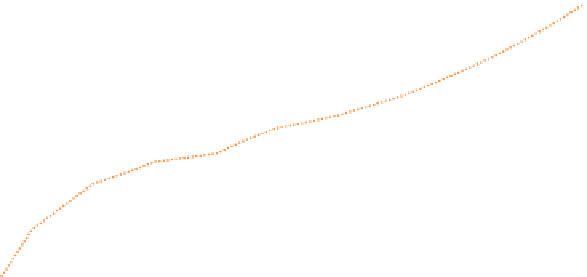Geography Reference
In-Depth Information
25000
REG scenario
CES scenario
BAU scenario
20000
15000
10000
5000
0
year
Fig. 3.5
CO
2
emissions under three scenarios during 1990-2095
3.1.5 CO
2
Emissions from Land Use Change
As shown in Fig.
3.5
, under BAU scenario, CO
2
emissions will have a certain
amount of increase in the coming decades and begin to drop down around 2065
although it will be extremely slow. CO
2
emissions will continue to accumulate
over the next 50 years, and CO
2
emissions are maintained at the relative high level
for a long time under BAU scenario. Therefore, although it will not cause the
serious pressure on environment under BAU scenario, the negative effect is still
profound, and it is not suitable for current environment. Under REG scenario, CO
2
emissions are at a higher level compared to the other two scenarios. CO
2
emissions
have rising trends all the time. The greenhouse effect is serious currently, so
controlling CO
2
emission is the primary objective of developing low carbon
economy around the world. It can be seen from the simulation results under REG
scenario, it is contrary to the strategic goal of sustainable development although
rapid economic development can be obtained. Therefore, REG scenario can't meet
the requirements of social development. Differently, under CES scenario, CO
2
emissions are beginning to show a downward trend in 2030, and have maintained
at a low level after 2070, which is close to the level in 1990s. This scenario is
beneficial to protect environment, and relieve environmental pressures in line with
the strategic objectives of sustainable development. Moreover, it ensures the
steady development of social economy as well. Therefore, this scenario achieves
double win, not only protects environment, but also promotes economic devel-
opment. Thus, CES scenario is the most suitable scenario in this study.




















































